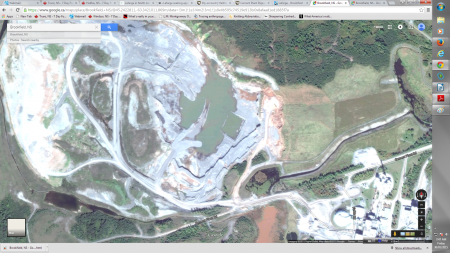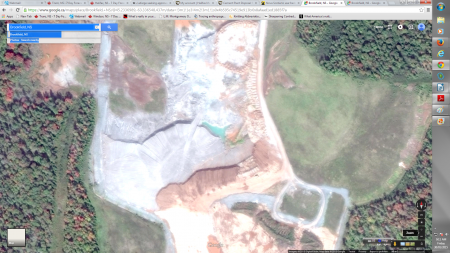Who knew?
Atlantic Industrial Services (AIS) has over the past year shopped to municipalities the treated fracking waste water held at their Debert facility at least five times.
What has remained below the radar is that when and if a municipality agrees to accept the treated waste water, AIS will still have to apply to the province's own process for determining if they will allow disposal of the treated wastes. That process has to include aboriginal consultation.
In 2014, after being blocked by various municipalities, AIS began a pilot project with Lafarge Canada to ship 2 million litres of the waste water to their cement kiln near Brookfield, Nova Scotia. The Nova Scotia Department of Environment's basis for approving Lafarge Canada to take the same processed waste water for evaporation in the cement kiln at it's Brookfield plant is explained as:
“Since the twice-treated wastewater met or exceeded Canadian Drinking Water Quality and Fresh Water Aquatic Life guidelines, no additional approvals were required by Nova Scotia Environment."
But couldn't the same be said about the proposal to release the treated fracking waste water into the Debert sewer system? Isn't is the same “twice-treated wastewater” that has been tested and found to meet those same standards?
So what is the difference? The waste water being twice treated and meeting standards is given as in itself sufficient for Nova Scotia Environment to approve disposal of the treated waste water in the Lefarge cement kiln; but the same is NOT sufficient in itself for the department to approve release into a municipal sewage plant.
The difference, according to both the department spokesperson, and to Environment Minister Randy Delorey, is that the disposal of the treated wastes into the sewer system is a “release into the environment.” But disposal by evaporation into the cement kiln is defined as not a release into the environment.
The Department of Environment defines “release into the environment” as release into a watercourse or onto land. That definition means that the cement kiln option does not require the degree of review that the proposed sewage treatement plant discharges must pass. Further, the department has deemed that the evaporation option does not require aboriginal consultation.
The only thing that can be said about the Lafarge disposal process is that there is no direct release into watercourses. But a major by-product of the cement kiln process is the mountains of cement kiln dust that accumulate at the antiquated plant, or are blended with Halifax Rregional Municipality sewage solids and are then spread on farm fields.
Rain and snow are leaching whatever is in that cement kiln dust into our watercourses and the groundwater that feeds our water wells. Only testing of the final outcomes of the cement kiln evaporation process can determine if contaminants that remain in the treated waste water are actually being concentrated by the cement kiln evaporation method of disposal.
Specialized drilling and fracking waste water incinerators in western Canada operate at temperatures more than double the Lafarge cement kiln, and force the wastes into multiple combustion processes. The remaining ash is collected and treated as a hazardous waste, because the process has concentrated heavy metals and radioactive materials not destroyed by the incineration.
The considerable quantity of circulating dust in the Lafarge kiln is at least one place those contaminants not destroyed would be expected to accumulate. Arguably, the cement kiln dust is the primary place to expect accumulation of contaminants.
But the cement kiln dust has never been tested. Asking Environment spokespersons why it has not been tested is a circular pursuit. The only 'answer' offered is that Lafarge is not really required to do any testing- that the testing of stack emissions and of the cement produced was done at the company's initiative, to make the public feel better about the proposal.
Since no one has any idea how much of the fracking waste water contaminants accumulate in the cement kiln dust, what is the basis for the Department of Environment determining that the disposal through the cement kiln is not a release into watercourses?
Meanwhile, disposal in the cement kiln of the treated fracking waste water from the Debert AIS facility continues.




